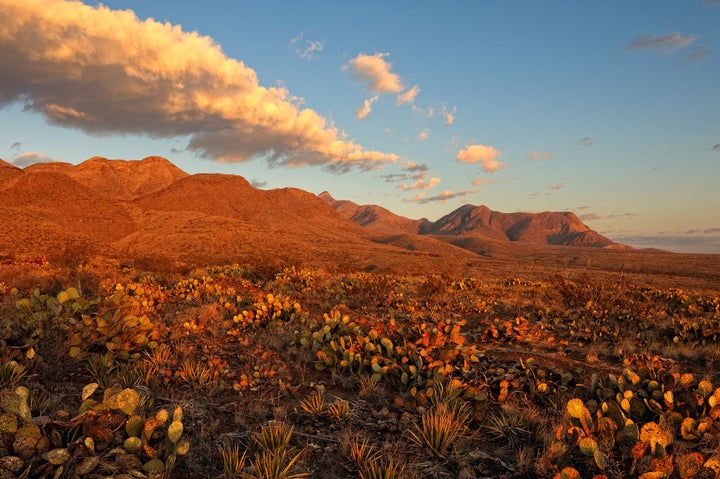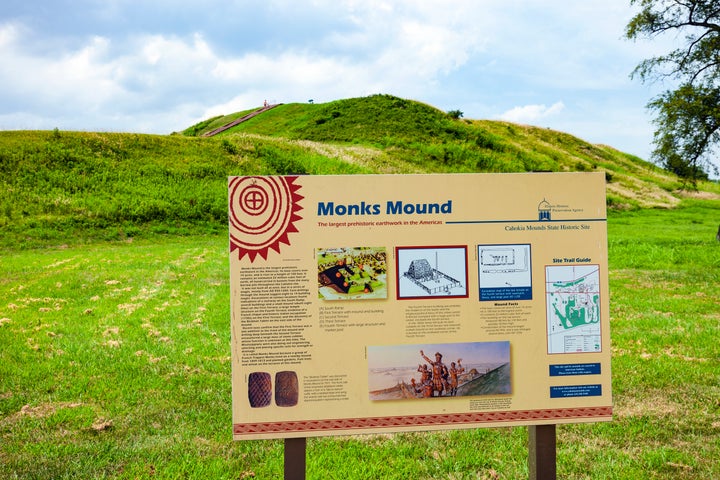
An organization representing current and former National Park Service employees is calling for President Joe Biden to use his executive power to establish several new national monuments around the country and advance his goal of conserving 30% of the nation’s lands and waters by 2030.
TheCoalition to Protect America’s National Parks published a report Tuesday that identifies six “national treasures in need of protection” and urges Biden to use the Antiquities Act of 1906 to make it happen.
Those sites include Castner Range, a 7,000-acre former military weapon testing facility east of El Paso that is home to archeological sites and a diversity of wildlife, and Avi Kwa Ame, meaning “Spirit Mountain” in the Mojave language, an area of southern Nevada that is sacred to 12 Native American tribes.
Signed into law in 1906 by President Theodore Roosevelt, the Antiquities Act authorizes the president to “declare by public proclamation historic landmarks, historic and prehistoric structures, and other objects of historic or scientific interest that are situated upon the lands owned or controlled by the Government of the United States to be national monuments.” Sixteen presidents, both Republicans and Democrats, have used it to create more than 150 monuments.
But in recent years, the Antiquities Act and monument designations have become political lightning rods.
The Trump administration and many Republican lawmakers in Western states have condemned what they argue are abuses of the act meant to “lock up” federal lands and waters. That anti-monument sentiment culminated with then-President Donald Trump dismantling three sites: Bears Ears and Grand Staircase-Escalante national monuments in Utah, and Northeast Canyons and Seamounts Marine National Monument off the East Coast. In October, however, Biden reversed the Trump-era rollbacks, restoring the sites to their original boundaries and reinstating more stringent protections.
On the campaign trail, Biden vowed to not only reverse Trump’s monument rollbacks but also to establish new protected sites to combat global climate change and safeguard ecologically important landscapes. He signed an executive order shortly after taking office that set a goal of protecting 30% of the nation’s lands and waters by 2030, known informally as “30x30.” And last May, the administration published a report outlining its vision for a 10-year “locally led” effort to conserve and restore lands and waters, slash planet-warming greenhouse gas emissions and address inequalities in who has access to nature and the outdoors.
But more than a year into his term, Biden has yet to designate a new monument — even as his administration works to advance its 30x30 conservation target.
Mike Murray, chair of the Coalition to Protect America’s National Parks, told HuffPost that the Antiquities Act is an important conservation tool and that his organization is disappointed national monuments have not been a bigger part of the 30x30 discussion.
“It’s time for the administration to make use of the Antiquities Act and to protect some of these special sites,” he said.
The coalition is pushing for the designation of six monuments to safeguard a range of natural, cultural and historical resources. Along with Castner Range and Avi Kwa Ame, the group’s wish list includes:
- Range of Light — an area of primarily Sierra National Forest lands that is home to hundreds of California’s native plant species, including the Giant Sequoia, and dozens of at-risk species. A monument would link Yosemite and Kings Canyon national parks.
- Douglas-Fir — an area of the Cascade Mountains in Oregon, including parts of the Willamette National Forest, that would safeguard remaining stands of old-growth Douglas fir trees and restore forests that have been heavily logged for decades.
- 1908 Springfield Race Riot site — an area of Springfield, Illinois, where in 1908 a mob of white residents attacked and murdered Black residents and torched Black-owned homes and businesses. Establishing the site as a monument “would help to ensure the historic and nationally significant events that led to the founding of the National Association for the Advancement of Colored People (NAACP) are always remembered,” reads the report.
- Cahokia Mounds — located across the Mississippi River from St. Louis, Cahokia was a pre-Columbian Native American city that in its peak in the 1200s had a population larger than London at the time. Currently a state historic park, the site features approximately 80 earthen mounds that were part of the ancient city.
There is local support for monument designations at all six sites.
To come up with the list, the coalition formed a working group of people with various backgrounds and expertise, and sought feedback from its membership. The result, Murray said, is a list of proposals that are achievable and would protect a variety of sites in different parts of the country
“Perhaps it’s the first round of recommendations,” Murray said. “We just hope to get the conversation started and encourage the admin, with the time they have left, to move forward.”
The coalition’s 13-page report, titled “In Support of the Antiquities Act: The Lasting Impacts of National Monuments,” does not advocate for specific monument acreages or quantify how much closer new designations would get the Biden administration to its 30x30 target. It does, however, highlight how many of America’s iconic national parks were first protected as national monuments, including the Grand Canyon, Alaska’s Glacier Bay and California’s Death Valley.

Interior Secretary Deb Haaland traveled last month to Castner Range, where she hiked adjacent lands and met with local officials “to learn about their vision for increasing access to, and conservation of, outdoor spaces,” the Department of the Interior said in a press release at the time. The range remains off-limits to the public due to unexploded ordnance from years of military testing.
But the White House has not signaled that it is planning to protect Castner Range or any other site via presidential proclamation. Neither the White House nor the Interior Department would comment on the Coalition to Protect America’s National Parks’ proposal.
In addition to Tuesday’s report, more than 300 members of the coalition signed on to a letter Tuesday calling for the administration to create new monuments and “continue to build an inclusive and resilient conservation legacy that reflects the diversity of our natural heritage and permanently protects our lands and waters.”
“Many of us have served at national parks across the country that were first protected as national monuments,” says the letter, addressed to Biden, Haaland and Brenda Mallory, chair of the White House’s Council on Environmental Quality. “Thanks to the use of the Antiquities Act, irreplaceable natural and cultural resources have been protected for the enjoyment of future generations.”
